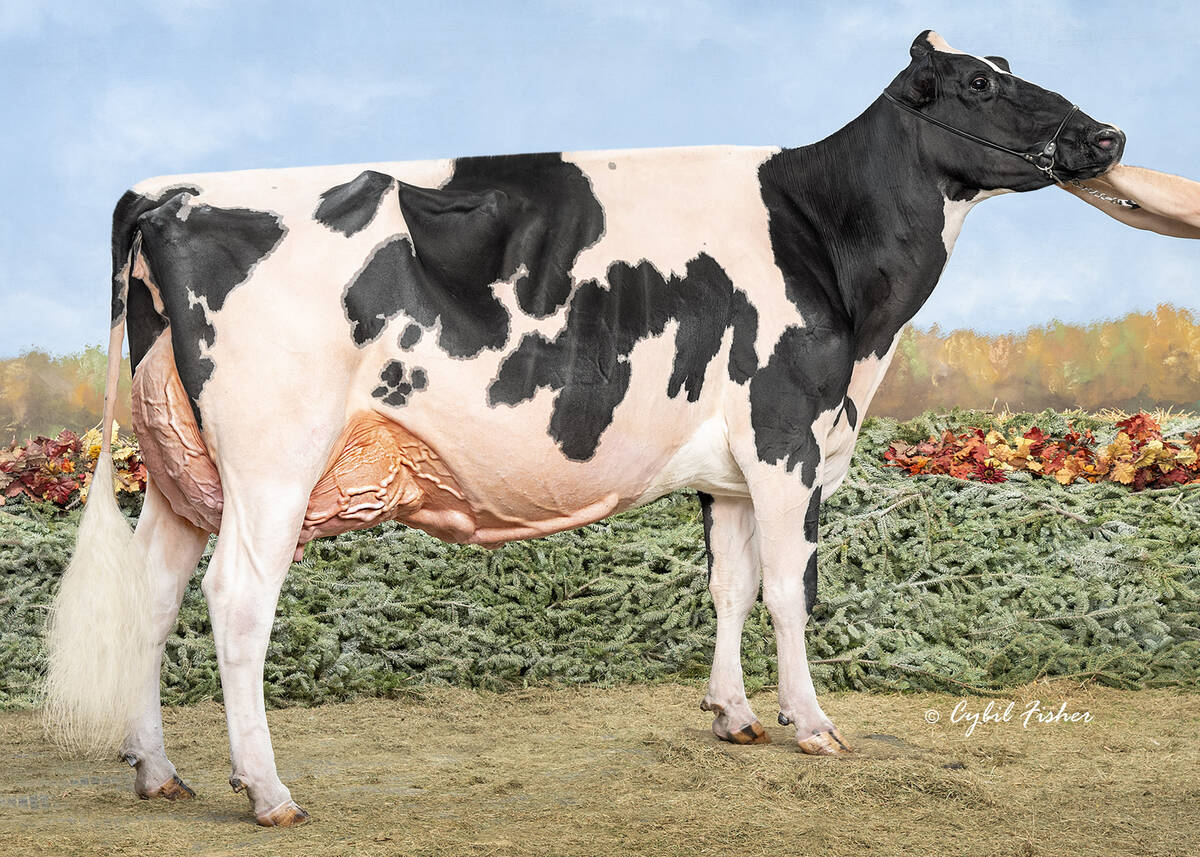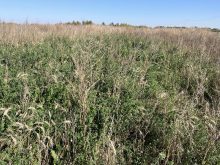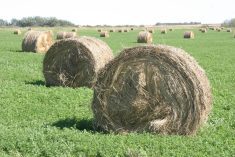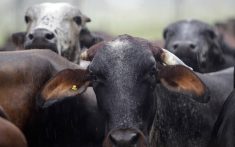KANSAS CITY, Mo. — Continuing research into bruises on cattle shows the problem is not going away.
A 2016 national beef quality audit in the United States found a loss of $124 million because of bruises that had to be trimmed away as waste. A Canadian audit for the same period reported 32.6 percent of fed cattle and 63 percent of non-fed animals (cows and bulls) had bruises.
“We saw a lot of bruises,” Josh White of the National Cattlemen’s Beef Association’s beef quality assurance program said at the North American Meat Institute conference, which was held in Kansas City this past fall.
Read Also

Saskatchewan dairy farm breeds international champion
A Saskatchewan bred cow made history at the 2025 World Dairy Expo in Madison, Wisconsin, when she was named grand champion in the five-year-old Holstein class.
“What we are seeing is much less severity of bruising, but the amount of bruising is similar, but the extreme and critical bruises measured over time have greatly reduced. That is a positive sort on animal handling and transportation.”
Bruising can be reduced with low stress handling and properly designed facilities.
Helen Kline, a doctoral candidate from Colorado State University, assessed the incidence of bruising at five commercial plants. She looked for the type of bruises, location on the body and severity of injuries on randomly selected cattle as they were unloaded from trailers.
“The incidences were found on the round, loin and rib areas. This was in line with a lot of previous research,” said Kline, who now works for JBS.
“All plants showed very similar trends.”
Cows, bulls and steers were observed from the time they came off the truck until they were slaughtered. The colours of the bruises were noted because this changes over time.
A bruise starts out bright red-blue, black or purple while older ones are green and yellow.
Kline observed the trailer types and found those on the top deck had fewer injuries compared to those riding in the belly. She did not compare single trailers to those with multiple compartments.
Once the animals were slaughtered, the amount of damaged material cut away was measured. About 2.21 pounds per carcass were trimmed away because of bruises. Using current market prices, losses were about US$5.48 per steer and $4.09 per cow or bull.
In addition, Kline’s team did not always notice all the flaws.
“About 41 percent of the carcasses were not visibly bruised, but they still experienced bruise trim loss,” she said.
Experienced trimmers on the cutting floor knew light pink hues appearing on a carcass were indicators of damages and often found deep injuries.
Researchers also noticed that animals with a good body condition score were less damaged.
“We were able to show as the body condition score improved, the bruising incidence went down,” Kline said.
Transportation was also evaluated. Driver experience ranged from one week to 45 years and travel distance ranged from 100 to 1,400 kilometres.
This research did not narrow down all the variables connected to bruising or locations on the body, she said in an interview.
“Transportation is one of the quality control points, but I don’t think it is the only quality control point,” she said.
“In my data, I never saw a consistent location of bruises every time.”
About 12 percent of bruises were fresh, said animal behaviourist Temple Grandin, who was Kline’s PhD adviser on the project.
“That 12 to 13 percent bruising probably happened at the plant with unloading or something that went on at the plant because those were super fresh,” Grandin said.
She hypothesizes some of the bruising is connected to bigger cattle struggling to move through facilities that were designed for shorter, lighter weight animals.
- poorly designed facilities that have sharp corners, protrusions, slippery floors, slamming gates, narrow entry ways, steep loading or unloading docks.
- horns
- poor fat coverage on non-fed cattle
- riding of cattle, wild temperament of cattle
- under or overcrowding on livestock trucks, too low compartments in trucks, poor driving habits and narrow and low truck gates or slippery truck floors















